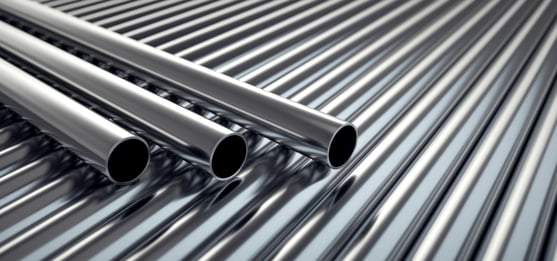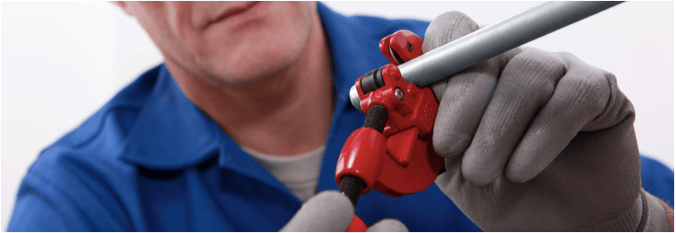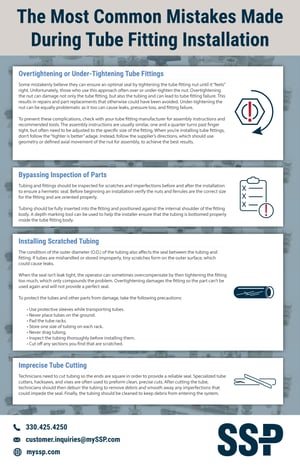Every connection is a potential leak point in a fluid system, this is why it is essential to pay special attention when using items like tube fittings to make them. Improper selection and installation of tube fittings can cause environmental releases, safety problems, and increased costs.
The following guide explains some of the most common mistakes made during tube fitting installation and how to avoid them.
Overtightening or Under-Tightening Tube Fittings
Some mistakenly believe they can ensure an optimal seal by tightening the tube fitting nut until it “feels” right. Unfortunately, those who use this approach often over or under-tighten the nut.  Overtightening the nut can damage not only the tube fitting, but also the tubing and can lead to tube fitting failure. This results in repairs and part replacements that otherwise could have been avoided. Under-tightening the nut can be equally problematic as it too can cause leaks, pressure loss, and fitting failure.
Overtightening the nut can damage not only the tube fitting, but also the tubing and can lead to tube fitting failure. This results in repairs and part replacements that otherwise could have been avoided. Under-tightening the nut can be equally problematic as it too can cause leaks, pressure loss, and fitting failure.
To prevent these complications, check with your tube fitting manufacturer for assembly instructions and recommended tools. The assembly instructions are usually similar, one and a quarter turns past finger tight, but often need to be adjusted to the specific size of the fitting. When you’re installing tube fittings, don’t follow the “tighter is better” adage. Instead, follow the supplier’s directions, which should use geometry or defined axial movement of the nut for assembly, to achieve the best results.
Bypassing Inspection of Parts
Tubes and fittings should be inspected for scratches and imperfections before and after the installation to ensure a hermetic seal. Before beginning an installation verify the nuts and ferrules are the correct size for the fitting and are oriented properly.
Tubing should be fully inserted into the fitting and positioned against the internal shoulder of the fitting body. A depth marking tool can be used to help the installer ensure that the tubing is bottomed properly inside the tube fitting body.
Installing Scratched Tubing
The condition of the outer diameter (O.D.) of the tube also affects the seal between the tube and fitting. If tubes are mishandled or stored improperly, tiny scratches form on the outer surface, which could cause leaks.
When the seal isn’t leak tight, the operator can sometimes overcompensate by then tightening the fitting too much, which only compounds the problem. Overtightening damages the fitting so the part can’t be used again and will not provide a perfect seal.

To protect the tubes and other parts from damage, take the following precautions:
- Use protective sleeves while transporting tubes.
- Never place tubes on the ground.
- Pad the tube racks.
- Store one size tube on each rack.
- Never drag tubing.
- Inspect the tubing thoroughly before installing them.
- Cut off any sections you find that are scratched.
Imprecise Tube Cutting
Technicians need to cut tubing so the ends are square in order to provide a reliable seal. Specialized tube cutters, hacksaws, and vises are often used to preform clean, precise cuts. After cutting the tube, technicians should then deburr the tubing to remove debris and smooth away any imperfections that could impede the seal. Finally, the tubing should be cleaned to keep debris from entering the system.

Tube Fittings at SSP
To ensure optimal tube fitting installation, follow the manufacturer’s installation instructions, inspect your materials before and after installation, use undamaged tubes, and cut, deburr, and clean the tubes carefully. Taking these steps will help ensure leak-tight tube fittings and the long-term success of your instrumentation system.
In addition to providing expert installation services, SSP also offers training courses to help users understand the key aspects of tube and fitting installation and maintenance. As a leading tube fitting manufacturer with nearly 100 years of experience, SSP has the knowledge and comprehensive background to provide superior products and services suitable for a variety of applications and industries. To ensure quality installation and successful integration of your instrumentation tube fittings, contact SSP today.
Explore our additional resources:



